Worms in Toilets at Home? Reasons Why & What to Do About It
-

- Last updated:
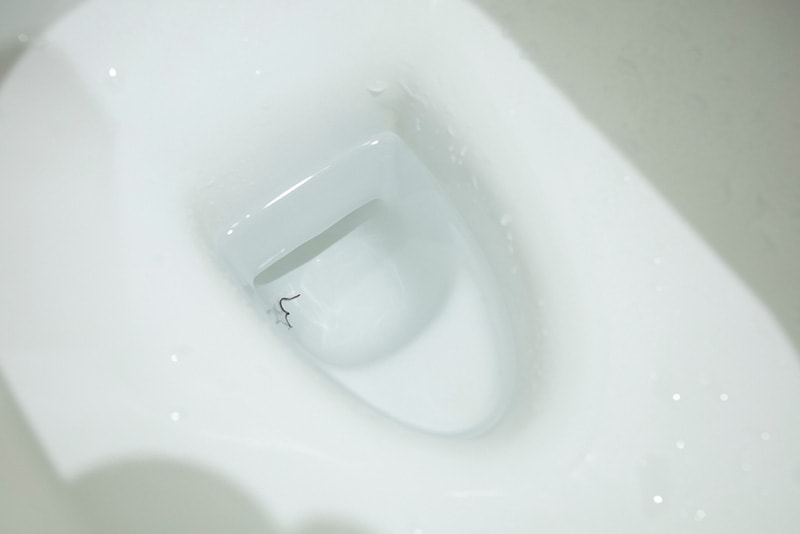
Worms appearing in bathrooms are not uncommon since toilets are connected to the sewer system, which is a breeding ground for some insects.
Some worms may be minding their own business and will stick around for a few days before disappearing, never to be seen again. Others may be a prerequisite for an incoming plague. However, not all of them are hazardous; the reason for their presence might surprise you. Regardless of their purpose for being there, finding worms in your toilet is usually a sign of hygienic problems with the drainage pipes.
Want to know more? Stick around as we explore types of toilet-visiting worms, how they can be controlled, and why they appear in your toilet.
The 4 Types of Worms Found in Toilets
1. Drain Fly Larvae
Drain flies are most prevalent in bathrooms; however, most people cannot identify them. They have a conspicuous dark breathing tube and a dark stripe on their dorsal region. While these worms are not dangerous to humans, it’s unsettling to have them around.
The presence of these worms in your bathroom doesn’t necessarily mean it is unhygienic or untidy, but it indicates a drain fly infestation.
2. Bloodworms
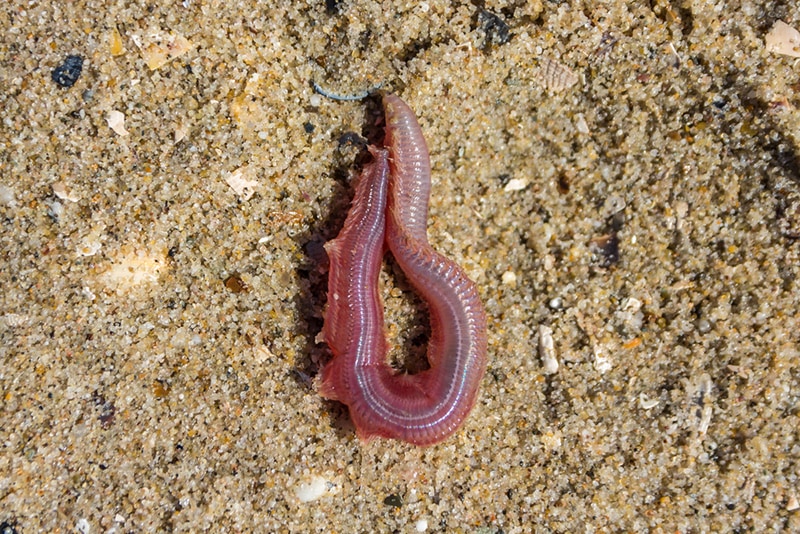
Bloodworms contain a high amount of iron-porphyrin in their body, which gives them a bright red color, hence the parasite’s name. They are often found in contaminated water, and their distinct color makes them very easy to identify. If you spot one, either your toilet lacks proper hygiene, or your water supply is compromised.
3. Earthworms

Earthworms are brown, tubular-looking worms often found in soil and feed on organic matter. While they rarely appear in toilets, you may still find one. If this happens, you have a cracked sewer pipe letting in earthworms and other foreign bodies.
Consult a PLUMBING expert
Find a plumbing specialist in your area, and get free, no-commitment estimates for your project.

4. Horsehair Worms
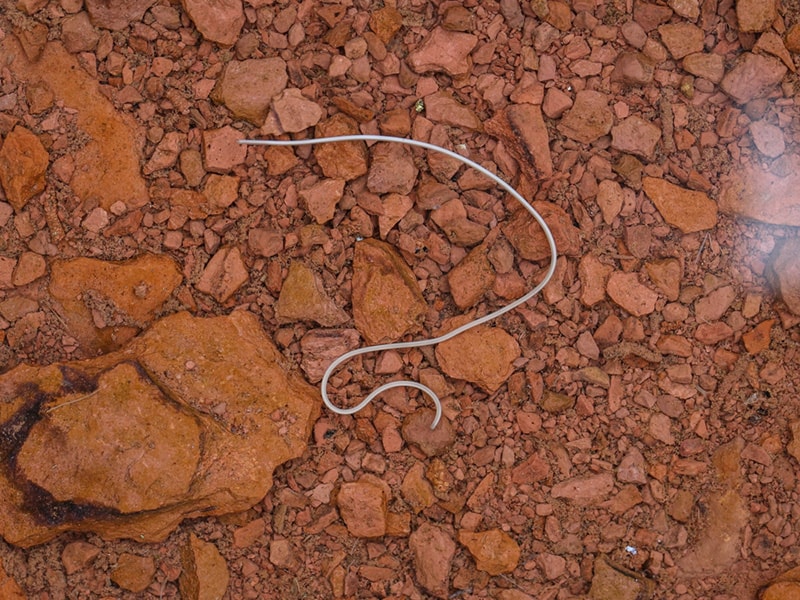
Horsehair worms reside inside insects such as crickets, beetles, grasshoppers, and cockroaches. They may still be found inside homes in toilets, raising fears that they are human parasites. However, this shouldn’t be a cause for concern as they aren’t parasites to livestock, pets, or humans.
They invade your toilet through the above insects after they consume a string of eggs from a nearby pond. They typically make their way to your bathroom in the form of eggs, so it feels as though they just appeared out of nowhere.
The 4 Common Ways Worms Get Into Toilets
Because sewer systems are not tightly sealed against worms, you will always find these nematode-like creatures in the bathroom. Here are other possible ways they traveled to your home.
1. Through Cracked Sewer Pipes
If the toilet has cracked underground pipes, they might be the entry point for worms, especially earthworms. These worms will squeeze themselves through the tiny gaps as they search for organic matter and journey to the bathroom.
You should not be frightened of earthworms. They are harmless and will eventually go away.
2. Forming a Habitat in Stagnant Water
The speed at which sewer effluents travel depends on the design of the system. If the system has a low gradient, wastes will stagnate. This is the perfect breeding ground for bloodworms. The high concentration of iron in their blood allows them to survive in a low-oxygen environment as they move upwards to the bathroom.
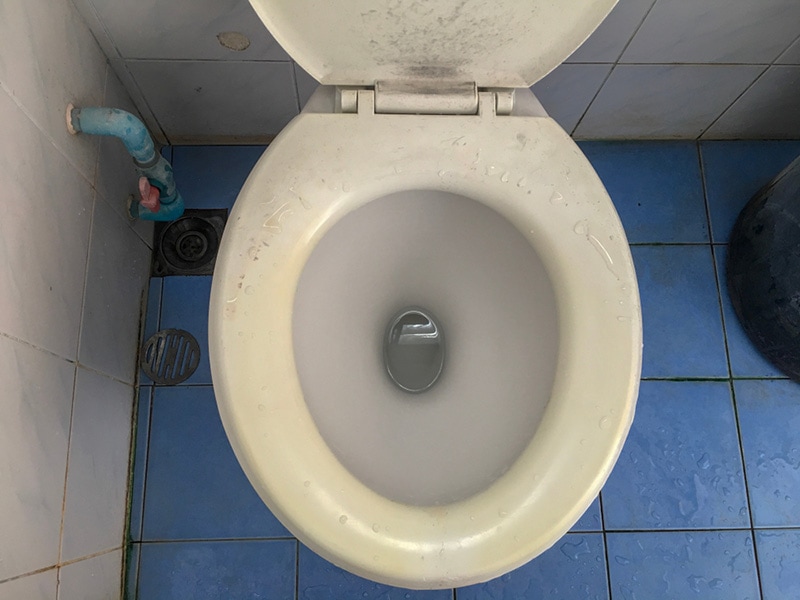
3. Attracted by Other Insects
Sewers are breeding grounds for roaches and mosquitoes, which attract horsehair worms for breeding. Some species will lay eggs in water and hatch into parasitic larvae. The larva will encyst to survive dormant until they are ingested by a host insect. This leads to the famous trait of a horsehair worm, where it hijacks the nervous system of the host, forcing it to actively seek water.
Once in the water, the horsehair worm will burrow out of its host into the sewer, and depending on their concentration, some will find their way into the toilet.
4. The Toilet is Connected to the Drain Fly’s Breeding Ground
As their name suggests, drain flies, aka moth flies, live and breed in drain pipes. Occasionally, there may be a population explosion, and you will find them in toilets.
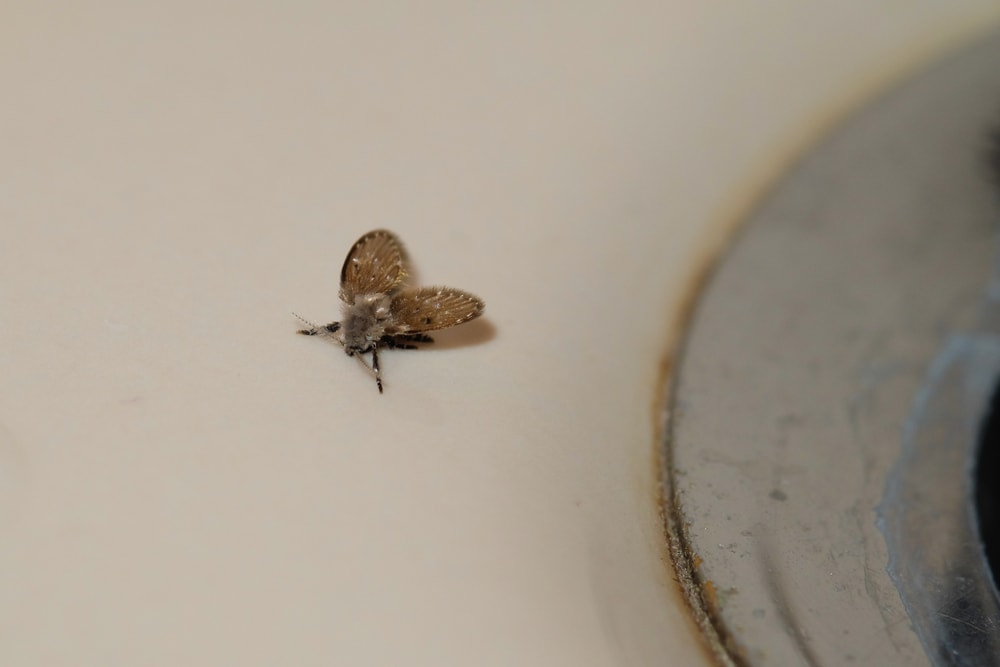
How Do You Get Rid of Worms in the Toilet?
Flushing worms down the drain with water isn’t enough to get rid of them. They can go through the openings and back to the bathroom. It is, therefore, advisable to use specific cleaning solutions that can kill worms.
Cleaning your bathroom with a disinfectant or a solution of vinegar and baking soda has been shown to help get rid of worms in your toilet. Mix a cup of vinegar with 1/3 cup of baking soda and put the mixture in a spraying bottle. Spray the solution on your toilets and drains, then use boiling water to rinse any organic matter residue.
Vinegar is an acidic food ingredient that, when mixed with water, will corrode delicate worms’ skin and kill them. Vinegar will also make organic matter unpalatable hence starving them.
Baking soda, on the other hand, has been registered by the Environmental Protection Agency for use against fungi and bugs. It kills worms by releasing carbon dioxide bubbles which suffocate them.
If you suspect the worms are still around, clean your bathroom and spray the entire space. This will destroy every egg and stop the appearance of these worms.
Are Toilet Worms Dangerous?
Drain insects and worms rarely bite or transmit blood-borne diseases. The health problems they carry are related to where they came from. They can carry and spread bacteria from drains to humans.
Additionally, mature drain flies have been known to worsen symptoms of bronchitis and contaminate food.
Are Toilet Worms Indicative of Dirty Drains?
In most cases, toilet worms are signs that there are hygienic problems with the drainage pipes. As we have already covered, stagnant drains provide organic matter and moisture for the growth and multiplication of worms. If you are using a private sewer system with your own septic tank, ensuring effluents flow smoothly and faster out of the toilet will stop the multiplication of worms.
Conclusion
You should not be bothered very much by worms visiting the toilets since they are very common and rarely spread diseases. However, there are telltale signs that sewer pipes are cracked or clogged, there is a problem with your toilet hygiene, or insects are attacking your home.
Use vinegar, powdered salt, or baking powder to get rid of them.
Featured Image Credit: TRADOL, Shutterstock
Contents



